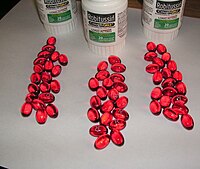
Isolating Rare Cells and Circulating Tumor Cells with High Purity by Sequential eDAR.
Sign Up to like & getrecommendations! Published in 2019 at "Analytical chemistry"
DOI: 10.1021/acs.analchem.9b03690
Abstract: Isolation and analysis of circulating tumor cells (CTCs) from the blood of patients at risk of metastatic cancer is a promising approach to improving cancer treatment. However, CTC isolation is difficult due to low CTC… read more here.
Keywords: sequential edar; tumor cells; isolating rare; purity ... See more keywords

Elevated EDAR signalling promotes mammary gland tumourigenesis with squamous metaplasia
Sign Up to like & getrecommendations! Published in 2021 at "Oncogene"
DOI: 10.1038/s41388-021-01902-6
Abstract: Ectodysplasin A receptor (EDAR) is a death receptor in the Tumour Necrosis Factor Receptor (TNFR) superfamily with roles in the development of hair follicles, teeth and cutaneous glands. Here we report that human Oestrogen Receptor… read more here.
Keywords: edar; edar signalling; elevated edar; squamous metaplasia ... See more keywords

99 Approaches to Eating and Drinking with Acknowledged Risk: A Systematic Review
Sign Up to like & getrecommendations! Published in 2020 at "Age and Ageing"
DOI: 10.1093/ageing/afz196.01
Abstract: Patients with dysphagia may consider eating and drinking with acknowledged risk (EDAR) instead of artificial hydration/nutrition. Timely consideration of complex issues is required including dysphagia reversibility, prognosis, risk/benefit discussions, patient wishes, their capacity, best interests… read more here.
Keywords: methodology; risk; eating drinking; drinking acknowledged ... See more keywords

Homozygous variants of EDAR underlying hypohidrotic ectodermal dysplasia in three consanguineous families
Sign Up to like & getrecommendations! Published in 2020 at "European Journal of Dermatology"
DOI: 10.1684/ejd.2020.3844
Abstract: Hypohidrotic ectodermal dysplasia (HED) is a congenital anomaly characterized by hypohydrosis, hypotrichosis and hypodontia. Mutations in at least four genes (EDAR, EDARADD, WNT10A, TRAF6) have been reported to cause both autosomal recessive and autosomal dominant… read more here.
Keywords: three consanguineous; family; consanguineous families; edar ... See more keywords